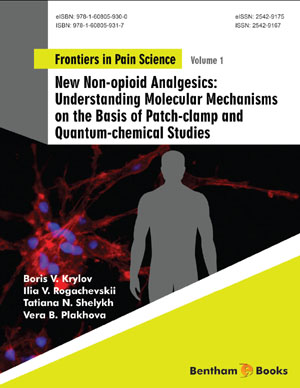Abstract
Cardiotonic steroids are a recently discovered class of hormones synthesized in the adrenal cortex and hypothalamus and circulating in the blood. It is well known that the target molecule for these agents is Na+,K+-ATPase. A direct consequence of the proposed mechanism of NaV1.8 channels modulation in Chapter 1 is the prediction of a special signaling function of the sodium pump. In other words, Na+,K+-ATPase should be involved in the processing of nociceptive information. The data presented in the current chapter support this idea. According to our findings, ouabain as a newly recognized hormone plays the role of endogenous analgesic at subnanomolar concentrations. Its target site is located directly on Na+,K+-ATPase and it recognizes ouabain, only in the form of its calcium chelate complex. The most significant result discussed in this chapter is explanation of the dual effect of ouabain: two distinct attacking molecules (ouabain and its calcium chelate complex) bind to two distinct sites of Na+,K+-ATPase, thus modulating two distinct functions of the enzyme: pumping and non-pumping (signal-transducing). Another newly recognized hormone, marinobufagenin, also exhibits analgesic effect at low concentrations but it is of principally different nature. This molecule lacks the ability to form marinobufagenin‒ Са2+ chelate complex in 1:1 stoichiometry which could activate the signal-transducing function of Na+,K+-ATPase upon binding to the enzyme. The decrease of Zeff of NaV1.8 channel activation gating device induced by application of marinobufagenin at nanomolar concentrations results from activation of the “modulated receptor” mechanism, i.e., this molecule binds directly to the aminoacid sequence of the channel without involvement of Ca2+.
Keywords: Ca2+ chelate complex, Limiting slope procedure, Marinobufagenin, NaV1.8 channels, Na+, K+-ATPase, Nociception, Ouabagenin, Ouabain, Patchclamp method, Quantum-chemical calculations.






















